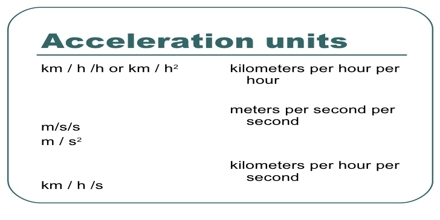
In the case where the distance of the particle from the origin does not change with time (which includes circular motion as a subcase), the second term vanishes and the above formula simplifies toįrom the above equation, one can recover the cross-radial acceleration in this special case as: Since is just, the second term may be rewritten as. Therefore, the orbital rotational acceleration is the vector defined byĮxpanding this derivative using the product rule for cross-products and the ordinary quotient rule, one gets: Where is the particle's position vector and is its velocity vector. The instantaneous rotational velocity vector at any point in time is given by In three dimensions, the orbital rotational acceleration is the rate at which three-dimensional orbital rotational velocity vector changes with time. Rotational acceleration then may be termed a pseudoscalar, a numerical quantity which changes sign under a parity inversion, such as inverting one axis or switching the two axes. The sign is conventionally taken to be positive if the angular speed increases in the counter-clockwise direction or decreases in the clockwise direction, and the sign is taken negative if the angular speed increases in the clockwise direction or decreases in the counter-clockwise direction.
#ACCELERATION IUNIT PLUS#
In two dimensions, rotational acceleration is a number with plus or minus sign indicating orientation, but not pointing in a direction. In the special case where the particle undergoes circular motion about the origin, becomes just the tangential acceleration, and vanishes (since the distance from the origin stays constant), so the above equation simplifies to Therefore, the instantaneous rotational acceleration α of the particle is given byĮxpanding the right-hand-side using the product rule from differential calculus, this becomes the component perpendicular to the position vector), which by convention is positive for counter-clockwise motion and negative for clockwise motion.

Where is the distance from the origin and is the cross-radial component of the instantaneous velocity (i.e. The instantaneous rotational velocity ω at any point in time is given by In two dimensions, the orbital rotational acceleration is the rate at which the two-dimensional orbital rotational velocity of the particle about the origin changes. Orbital Angular Acceleration of a Point Particle Particle in two dimensions 1 Orbital Angular Acceleration of a Point Particle.However, this is not so for non-rigid bodies: For example, a figure skater can speed up her rotation (thereby obtaining an rotational acceleration) simply by contracting her arms and legs inwards, which involves no external rotational force. In three dimensions, rotational acceleration is a pseudovector.įor rigid bodies, rotational acceleration must be caused by a net external rotational force. In two dimensions, rotational acceleration is a pseudoscalar whose sign is taken to be positive if the angular speed increases counterclockwise or decreases clockwise, and is taken to be negative if the angular speed increases clockwise or decreases counterclockwise. Rotational acceleration is measured in units of angle per unit time squared (which in SI units is radians per second squared), and is usually represented by the symbol alpha ( α). Spin rotational acceleration refers to the rotational acceleration of a rigid body about its centre of rotation, and orbital rotational acceleration refers to the rotational acceleration of a point particle about a fixed origin. As there are two types of rotational velocity, namely spin rotational velocity and orbital rotational velocity, there are naturally also two types of rotational acceleration, called spin rotational acceleration and orbital rotational acceleration respectively. In physics, rotational acceleration or angular acceleration refers to the time rate of change of rotational velocity.


 0 kommentar(er)
0 kommentar(er)
